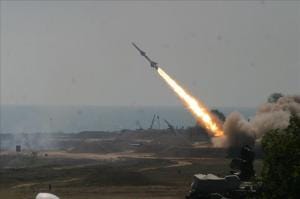On February 6th, 2023, a devastating earthquake struck southern and central Turkey and northern and western Syria, leaving behind a trail of destruction and loss. The earthquake, with a magnitude of Mw 7.8, was one of the strongest ever recorded in the Levant and had a maximum Mercalli intensity of XI (Extreme). The impact was felt as far as Egypt, Israel, Palestine, Lebanon, Cyprus, and the Black Sea coast of Turkey. The earthquake affected an area of about 350,000 km, around 12 times the size of Belgium, and more than 14 million people were impacted, including 1.5 million left unhoused.
The death toll has climbed to more than 51,800 people, making it the deadliest earthquake in Turkey’s modern history and the deadliest in Syria since the 1822 Aleppo earthquake. The earthquakes were the fourth-costliest on record, with projected damage in Turkey and Syria totaling $84.1 billion and $5 billion, respectively.
The earthquake is a tragic reminder of the devastating power of nature and the importance of preparedness and support in times of crisis. They can cause widespread damage and devastation, affecting everything from buildings and infrastructure to human lives and livelihoods. In this article, we will explore the causes of earthquakes, how they are measured, and their effects. We will also discuss earthquake preparedness and prediction, and the importance of understanding these phenomena for public safety.
What is an earthquake?
An earthquake is a quick, violent shaking of the ground caused by the shifting of tectonic plates and rocks beneath the surface of the Earth. It is a natural phenomenon that occurs as a result of the release of energy from within the Earth’s crust, often due to the movement of tectonic plates, volcanic activity, or other geological processes.
The energy released during an earthquake travels through the Earth in the form of seismic waves, which can cause the ground to shake, shift, and sometimes crack. Earthquakes can vary in size and intensity, with the most powerful earthquakes capable of causing widespread destruction and loss of life.
In addition to their destructive potential, earthquakes also play an important role in shaping the Earth’s surface and can create new landforms, such as mountains and valleys. They can also trigger other natural disasters, such as landslides, tsunamis, and volcanic eruptions.
What are the causes of earthquakes?
Earthquakes are caused by a variety of natural and human-induced factors. The main cause of earthquakes is tectonic plate movement, which results from the slow but continuous movement of Earth’s tectonic plates. However, other factors such as volcanic activity, landslides, and human activities like oil drilling and mining can also trigger earthquakes. In this section, we will discuss the various causes of earthquakes in detail.
Plate Tectonics
Plate tectonics is the main cause of earthquakes. Earth’s crust is made up of tectonic plates that move slowly but continuously due to the convection currents in the mantle. When two plates meet, they can either move apart, slide past each other, or collide. The boundaries where plates meet are known as fault lines, and earthquakes occur when the energy that has built up along a fault is released suddenly.
There are three main types of tectonic plate boundaries: divergent, convergent, and transform. Divergent boundaries, which happen when two plates drift apart, are typically accompanied by small earthquakes. Convergent boundaries occur when two plates move towards each other, and they are usually associated with strong earthquakes. Transform boundaries occur when two plates slide past each other, and they are also associated with strong earthquakes.
Faults and Fault Lines
Faults are fractures or breaks in the Earth’s crust that occur due to tectonic plate movement. Faults can be classified into three main categories: normal, reverse, and strike-slip. Normal faults occur when the rocks above the fault move down relative to the rocks below the fault. Reverse faults occur when the rocks above the fault move up relative to the rocks below the fault. The rocks on the opposite sides of a strike-slip fault slide past one another horizontally.
Fault lines are the boundaries between two tectonic plates where the fault is located. These are usually the sites where earthquakes occur, as the energy that builds up along the fault is released suddenly.
Natural and Human-Induced Seismic Activities
Apart from tectonic plate movement, there are other natural and human-induced activities that can trigger earthquakes. Volcanic activity can cause earthquakes, as the movement of magma and volcanic gasses can create pressure in the Earth’s crust. Landslides and avalanches can also cause earthquakes, as the sudden movement of large masses of rock can generate seismic waves.
Human activities like oil drilling, mining, and the construction of large dams can also trigger earthquakes. These activities can change the stress and strain on the Earth’s crust, which can lead to the movement of tectonic plates and the occurrence of earthquakes.
Measuring Earthquakes
Measuring earthquakes is an essential part of understanding these natural phenomena and predicting their impact. There are several methods for measuring the strength and intensity of earthquakes, including the use of scales, instruments, and other tools.
Climate Change: What are the Causes of Climate Change?
Richter Scale and Moment Magnitude Scale
The Richter scale is the most well-known scale for measuring the strength of earthquakes. Developed in the 1930s by American seismologist Charles Richter, the scale is based on the amplitude of seismic waves measured by a seismograph. The scale ranges from 0 to 10, with each increase in number representing a tenfold increase in the amplitude of the seismic waves. However, the Richter scale has limitations, as it is not suitable for measuring larger earthquakes.
The moment magnitude scale, also known as the MMS scale, was developed in the 1970s as an improvement over the Richter scale. The MMS scale measures the energy released by an earthquake, rather than just its amplitude, and is therefore more accurate for measuring larger and more powerful earthquakes. The MMS scale ranges from 0 to over 10, and each increase of one unit on the scale represents a 30-fold increase in energy released.
Seismographs and Seismometers
Seismographs are instruments used to measure and record seismic waves generated by earthquakes. They consist of a ground motion sensor called a seismometer, which is connected to a recording device. Seismometers measure ground motion and convert it into an electrical signal, which is recorded by the instrument. Seismographs can provide valuable data on the location, strength, and duration of an earthquake.
Intensity Scales
Intensity scales measure the effects of an earthquake on people, structures, and the environment. One commonly used intensity scale is the Modified Mercalli Intensity Scale, which ranges from I (not felt) to XII (total destruction). Intensity scales are used to assess the level of damage caused by an earthquake and can provide useful information for emergency response teams.
In addition to these methods, scientists also use a range of other tools and techniques to measure and study earthquakes, including GPS, satellite imagery, and computer modeling. By combining data from these sources, researchers can gain a more comprehensive understanding of the causes and effects of earthquakes, and work towards improving earthquake preparedness and response efforts.
What are the effects of earthquakes?
Earthquakes can have devastating effects on the environment, people, and infrastructure. The intensity of an earthquake can range from barely noticeable to extremely destructive. Some of the most significant effects of earthquakes are discussed below.
Ground shaking and liquefaction
One of the most immediate effects of earthquakes is ground shaking. The shaking can cause damage to buildings and infrastructure, as well as displacement of the ground. Ground shaking can also lead to soil liquefaction, where loose soil behaves like a liquid due to the movement caused by the earthquake. This can cause buildings and other structures to sink, tilt, or even collapse.
In the case of the 2023 Turkey-Syria earthquake, ground shaking was extreme, with a maximum Mercalli intensity of XI (Extreme), which resulted in widespread damage and tens of thousands of fatalities. The shaking also triggered soil liquefaction, which exacerbated the damage.
Tsunamis and their impact: Earthquakes that occur under the ocean floor can generate tsunamis, which are large ocean waves that can travel across entire ocean basins. Tsunamis can cause significant damage to coastal regions, leading to loss of life, property damage, and environmental destruction. The 2004 Indian Ocean earthquake and tsunami, for example, resulted in an estimated 230,000 deaths and caused extensive damage to coastal communities in multiple countries.
Landslides and avalanches
Earthquakes can also trigger landslides and avalanches in mountainous regions. The shaking caused by the earthquake can destabilize slopes, leading to large-scale landslides and avalanches. These can cause significant damage to infrastructure and communities in the affected areas.
Building and infrastructure damage
Earthquakes can cause significant damage to buildings and infrastructure, particularly in areas where construction standards are not earthquake-resistant. In the case of the 2023 Turkey-Syria earthquake, an estimated 14 million people were affected, and 1.5 million were left homeless. The earthquake caused $84.1 billion in damage in Turkey and $5.1 billion in Syria, making it the fourth-costliest earthquake on record.
Other effects
Earthquakes can also have other effects, such as fires and disruption to essential services like electricity and water supply. The shaking can also cause damage to transportation infrastructure like roads, bridges, and airports, leading to disruptions in trade and travel.
Aftershock
Aftershocks are a common occurrence after a major earthquake and can have significant effects on the affected area. As such, it is important to understand what they are and how they can impact people and infrastructure.
Smaller earthquakes known as aftershocks, usually strike the same general location as the major quake hours, days, or even weeks after the initial tremor. These earthquakes are caused by the readjustment of the earth’s crust to the changes brought on by the main earthquake. The aftershocks can be just as dangerous as the initial earthquake and can cause further damage to already weakened buildings and structures.
The frequency and magnitude of aftershocks vary depending on the size and location of the initial earthquake. Typically, the larger the initial earthquake, the more frequent and larger the aftershocks will be. In fact, some aftershocks can be as large or larger than the initial earthquake, which can be particularly devastating for areas already affected by the initial quake.
Aftershocks can also trigger landslides and liquefaction, which can further damage infrastructure and buildings. As such, it is important to take aftershocks seriously and to take appropriate safety measures to protect yourself and your property.
In the aftermath of a major earthquake, it is recommended to follow the instructions of emergency services and government agencies to ensure your safety. This may include temporarily evacuating the area until aftershocks have subsided and it is deemed safe to return. Additionally, it is important to have an emergency kit prepared and to review emergency plans with family members and coworkers to ensure everyone knows what to do in the event of an earthquake or aftershock.
Earthquakes in Turkey and Syria
The recent earthquake occurred near a triple junction between the Anatolian, Arabian, and African plates and could have occurred in either the East Anatolian Fault zone or the Dead Sea Transform. The East Anatolian Fault is a 700-kilometer-long left-lateral transform fault between the Anatolian and Arabian plates that has produced large earthquakes in the past. The Palu–Sincik, and Çelikhan–Türkoglu segments of the fault are currently identified as seismic gaps and have accumulated enough strain to produce major earthquakes. The East Anatolian Fault joins the North Anatolian Fault at the Karlıova Triple Junction, where a magnitude 7.1 earthquake occurred in 1971. The Dead Sea Transform extends from the Red Sea to the Marash Triple Junction and has produced at least 14 large historical earthquakes, including the 1872 earthquake that killed at least 1,800 people.

Two strong earthquakes struck Turkey on the 5th of February 2023. The first earthquake, which occurred at 01:17 UTC, had a moment magnitude of Mww 7.8 and an epicenter located 34 km west of Gaziantep in Gaziantep Province, near the border with Syria. The second earthquake struck at 10:24 UTC, measuring Mww 7.5 according to USGS, and Mw 7.6 according to KOERI, with an epicenter located in a different location to the first earthquake. Both earthquakes were caused by shallow strike-slip faulting and had significant aftershocks. These were two of the strongest earthquakes ever recorded in Turkey and were globally the strongest recorded since August 2021.
Damage and casualties
The Mw 7.8 earthquake was the strongest to occur in Turkey since the 1939 Erzincan earthquake and was felt as far as Egypt, Israel, Palestine, Lebanon, Cyprus, and the Black Sea coast of Turkey. The earthquake sequence was the result of shallow strike-slip faulting. According to estimates, the earthquakes were the fourth-costliest on record, causing US$84.1 billion in losses in Turkey and US$5.1 billion in Syria. More than 45,000 fatalities occurred in Turkey, while more than 6,700 occurred in Syria, totaling more than 51,800. It is the deadliest natural disaster in Turkey’s modern history.
Damages and Casualties in Turkey • At least 45,089 people died and 114,991 were injured in the 11 most affected provinces of Turkey. • 4 million buildings and 13.5 million individuals have been affected, and at least 345,000 flats have been completely destroyed. • Many people were trapped under the rubble, and some of them livestreamed their pleas for help on social media. • The Ministry of Environment, Urbanization and Climate Change conducted damage inspections for 1.25 million buildings, revealing that 164,000 buildings were either destroyed or severely damaged. • At least 1.5 million people were made unhoused, and the earthquake caused broad fissures on roads. • Body parts were often found in the rubble during recovery efforts. • Adana Şakirpaşa Airport was closed due to runway damage, and 12 buildings, including a 17-story apartment complex, collapsed in Adana. • At least 300 buildings were razed in Malatya, and the ceiling of Malatya Erhaç Airport experienced a partial collapse. • In Gaziantep, many historical sites were severely damaged, and nearly 2,500 people died in Nurdağı. • In Hatay Province, at least 9,224 buildings were partially or totally destroyed, and up to 80 percent of the city's buildings required demolition. The lavish Rönesans Rezidans apartment collapsed, trapping and killing an undetermined number of people while trapping 800. • A large fire at the port in İskenderun, an industrial city in Hatay Province, was reported on 6 February, and flooding occurred along the city shoreline. • Mass burials occurred in Kahramanmaraş for more than 5,000 bodies, and almost all single-story buildings were decimated in Ordekdede, a village in Pazarcik District.
What is Climate Change? How to prevent Climate Change?
Damages and Casualties in Syria • A 6.2 magnitude earthquake struck Syria on February 6, 2022, killing at least 6,760 people and injuring over 14,500. • Most of the deaths and injuries occurred in the provinces of Aleppo and Latakia. • Nearly half of Syria's population was impacted by the earthquake, and an estimated 5.37 million people may have lost their homes. • More than 123 residential areas, villages, towns, and cities were badly damaged, along with power plants, water facilities, hospitals, and public infrastructure. • At least 453 schools were damaged. • The Margat Castle, Khawabi Castle, and Aleika Castle in Tartus Governorate were among the damaged archeological structures, and the latter two largely collapsed. • Rebel-held areas were preparing for a blizzard and experiencing a cholera outbreak when the earthquake struck. • The earthquake exacerbated the already extensive damage caused by an almost 12-year-long civil war in Syria. • Many people fled from their homes onto the streets in Damascus, while in Aleppo, dozens of buildings collapsed and at least 444 people died, including 163 children.
Governmental Assistance
The Turkish government has promised compensation and assistance to those affected by the earthquake. President Erdogan announced that relocation and rent assistance would be given to affected households, with a promise to rebuild all destroyed homes within one year. Force majeure was imposed in the affected region, and tax obligations were postponed. The government allocated 100 billion lire (US$5.3 billion) to the disaster response and announced plans to construct 200,000 homes in affected cities and 70,000 in villages. Over 1.9 million people were rehoused in various accommodations including dormitories, guest houses, tents, hotels, and containers.
International assistance
After the 2023 Turkey-Syria earthquake, many countries and organizations responded with humanitarian efforts. More than 105 nations and 16 international organizations are committed to helping earthquake victims. Several countries also sent teams with search and rescue dogs to locate victims trapped under the debris. However, outreach to Syria was less enthusiastic due to Western sanctions on the country and limitations imposed on humanitarian organizations from operating outside areas of their control. Many organizations also provided aid and support, including the Arab League, ASEAN, the European Union’s European Civil Protection Mechanism, NATO, the United Nations, and the World Bank. These organizations provided assistance in the form of financial aid, rescue teams, medical teams, emergency mapping services, and temporary housing facilities. The United Nations also released $25 million from its emergency fund for humanitarian assistance in Turkey and Syria, and the World Bank pledged to provide $1.78 billion in aid for Turkey to support the relief and recovery process.

Preparing for Earthquakes
Preparing for earthquakes is crucial in reducing the loss of lives and property damage during an earthquake. Here are some ways to prepare for earthquakes:
Emergency Preparedness Plans
An emergency preparedness plan should be developed by individuals, families, and communities to help them deal with the aftermath of an earthquake. The plan should include a list of emergency contacts, evacuation routes, and essential supplies that should be available in case of an earthquake.
What is Climate change? What do the consequences of Climate Change on the environment?
Building Codes and Earthquake-Resistant Construction
Building codes are laws and regulations that specify the minimum standards for construction, design, and materials used in buildings. Earthquake-resistant construction techniques should be incorporated into building codes to help reduce the effects of earthquakes on buildings. Some examples of earthquake-resistant construction techniques include the use of reinforced concrete and steel frames, shear walls, and base isolation systems.
Earthquake Drills and Simulations
Earthquake drills and simulations are designed to help people practice what to do during an earthquake. During these drills, people practice taking cover under tables or desks, holding onto sturdy objects, and evacuating buildings.
Insurance
Homeowners and renters should consider getting earthquake insurance to cover losses resulting from an earthquake. It is crucial to obtain specific earthquake insurance coverage because the damage caused by earthquakes is not covered by typical homeowners’ insurance plans.
Education and Training
People must be educated and trained in order to be prepared for an earthquake. They can learn about the dangers of earthquakes and how to lessen those dangers through education. People should learn how to respond effectively and promptly during an earthquake through training.
Emergency Supplies
It is essential to have an emergency supply kit that includes items such as water, food, first aid supplies, and flashlights. These supplies should be stored in an easily accessible location in case of an earthquake.
By preparing for earthquakes, individuals and communities can reduce the impact of an earthquake on their lives and property. It is important to remember that earthquakes can happen at any time, so being prepared can save lives and reduce property damage.
Earthquake Predictions and Forecasts
Earthquake prediction and forecasting is a field of study that aims to provide advanced warning of potential earthquakes and estimate the likelihood of earthquakes in a given area. Despite significant advancements in earthquake research and technology, predicting earthquakes with high precision remains a challenge.
Current methods of earthquake prediction involve studying the patterns of earthquakes, fault zones, and geological data. Scientists and researchers use a range of tools and techniques to study and monitor earthquakes, including seismographs, GPS sensors, satellite imagery, and geological surveys. By analyzing the data collected from these sources, they can identify patterns and trends that may indicate the potential for an earthquake.
One approach to earthquake prediction involves monitoring changes in the stress and strain of the Earth’s crust. This includes measuring the movement of tectonic plates and monitoring the buildup of stress along fault lines. Scientists also look for changes in the Earth’s magnetic field, groundwater levels, and the behavior of animals, as they may indicate the potential for an earthquake.
Another approach to earthquake prediction involves studying past earthquake patterns and using statistical models to estimate the likelihood of future earthquakes. This approach is based on the principle that earthquakes tend to occur in cycles, and that by studying the frequency and magnitude of past earthquakes, scientists can make predictions about future events.
Despite these methods, earthquake prediction remains a challenging task. Earthquakes are complex, nonlinear events that can occur suddenly and with little warning. There are also many factors that can affect the likelihood and severity of an earthquake, including changes in the Earth’s crust, human activity, and natural disasters such as hurricanes or volcanic eruptions.
Currently, there is no reliable method for predicting earthquakes with high accuracy. However, advances in technology and research are bringing us closer to this goal. In recent years, scientists have made significant strides in developing new monitoring techniques, such as real-time GPS sensors and satellite imagery, which can provide more precise data on the movement of the Earth’s crust.
Overall, earthquake prediction and forecasting remain important areas of research and development. As our understanding of earthquakes and their causes continues to grow, we may one day be able to predict these events with greater accuracy and help prevent the loss of life and property damage that often accompany them.
Conclusion
The effects of earthquakes can be devastating, causing widespread damage, loss of life, and social disruption. While we cannot completely predict when or where an earthquake will strike, we can take steps to mitigate its impact and be prepared to respond in the event of an earthquake.
Developing and implementing emergency preparedness plans, building codes that incorporate earthquake-resistant construction techniques, and earthquake drills and simulations are all important steps in preparing for earthquakes. Continued research into earthquake prediction and forecasting, as well as advancements in technology, will also play a critical role in helping us better understand and prepare for earthquakes in the future.
As we have seen in the recent earthquakes in Turkey and Syria, earthquakes can strike at any time and without warning. By understanding the causes and effects of earthquakes, and taking steps to prepare and respond to them, we can help minimize their impact and keep ourselves and our communities safe.















